2013.02.03
Road stations provide information & entertainment
By Mana Komatsu
Michi-no Eki is an important set of words to remember, as it means Road Station, and those are very popular spots in Japan.
Michi-no Eki have three functions such as “rest station”, “facility to offer information” and “area to create sense of community” for road users and local community. There are 996 stations registered into the Ministry of Land, Infrastructure, Transport and Tourism, all over Japan, with seven road stations in Okinawa.
Road stations offer places to eat and to rest, as well as seasonal information, tourist
information, knowledge of local history and culture, and help dealing with a long trip in your car. Additionally all Michi-no Eki have their characteristics or original points. Some specialize in local history, for example, others focus on special local products, sell fresh vegetables or seafood.
When out driving or enjoying the outdoors, make time to visit them. In this new series, we’ll introduce charms of Michi-no Eki in Okinawa every other week.
We begin with “Michi-no Eki Toyosaki” in Tomigusuku. Toyosaki is conveniently located, a 13-minute drive from Naha Airport, and five minutes from Tomigusuku
Nakachi interchange on Naha Airport Expressway by car. It opened in December, 2008 as the westernmost Michi-no Eki in Japan.
There is a beach near Toyosaki, “Chura-SUN-Beach”, which is the biggest artificial beach in Okinawa, and closest to the airport.
Various sorts of information from around Okinawa have been concentrated in Michi-no Eki Toyosaki. There are two main facilities and the biggest rental car station on the island is next to it, so it’s a good starting point for sightseeing.
“Jyohou Station” information center
Michi-no Eki usually provide knowledge of local history and tourist information focusing on the area where the Michi-no Eki is located. But here,”Jyohou Station”, a facility to offer information, is different. It’s not too much to say that you can get there complete information package of the entire island, as a lot of seasonal information from around Okinawa has been collected here. Various kinds of brochures are lined up in the facility, including publications in English.
The staff want visitors to see good points of Okinawa such as its rich nature, great history and culture. They also want to help people who need advice or are in trouble. That’s the staff’s policy. “Some visitors ask where they can find a good spot for fishing, or what time the sun sets on Senaga-Island” one of the staff in Jyohou Station explained. They service and respond smiling, carefully if you ask a small question. She also said “when you can’t make your mind about where to go, please come and find interesting tips here. We want to carry on the station as a main facility to promote Okinawa, and offer quality information for visitors.” Information is gathered from various places around Okinawa, so the station is recommended not only for tourists but also for local people.
The Jyohou Station is open from 9 a.m. to 5 p.m. on weekdays, 9 a.m. to 6 p.m. on Saturdays, Sundays and public holidays. A parking lot and bathrooms are available for all day and night for free.
“Nanairobatake” Farmers’ market
Farmers’ market “Nanairobatake” is next to Jyohou Station. It sells vegetables with a
focus on Tomigusuku, prefectural products and domestic items. Farmers grow a variety of crops and bring them to the farmers market. The Nanairobatake carefully checks agricultural chemicals and controls product quality.
Nanairobatake especially puts emphasis on the promotion of mango as Tomigusuku is famous for its quality product. Blessed with a lot of veteran farmers, the farmland condition is suited for growing the fruit. Therefore, high quality mango are harvested every year. Tomigusuku was certified as a major production area of mango by the prefectural governor in 2000. The best season for mango is from June to August. “at the picking season, many customers visit Michi-no Eki Toyosaki to find good ones from throughout Okinawa,” the manager of the store says. He adds that, “Some customers come here with the aim of purchasing our mango every year. I met a customer who bought sixty cases in the past.” The staff in Nanairobatake is familiar with the product, so they help you to select good ones.
The shop also stocks pureed mango during the harvesting season, and it started a small shop to offer fresh juice, crushed ice with flavored syrup and other mango products in the premises last year. “Our Mango is 100% from Tomigusuku, and we are particular about the source of fruit.” he explained.
Now during the winter season, tomatoes and mini-tomatoes are hitting the shelves. Tomigusuku accounts for 60% of prefectural production of tomato. The farmers aggressively adopt natural enemy insects for extermination of harmful bugs and cultivate with reduced amount of agrichemicals. The season is from now to spring.
When you are hungry, there is an eating place in the store where local women cook dishes always using more than half Okinawan ingrefients. A popular dish is Omutako-Don, that is Tako-rice topped with eggs, that was devised by the mayor of Tomigusuku.
The store hours are from 9 a.m. to 7 p.m., seven days a week.
To get to Michi-no Eki Toyosaki, driving south past Naha Airport on Hwy 331, turn right up the ramp at Senaga Intersection and get off at Ashibinaa Outlet Mall exit. Turn right. The Toyosaki Michi-no Eki is on the right about 100 meters from the turn.





 2024.06.08
2024.06.08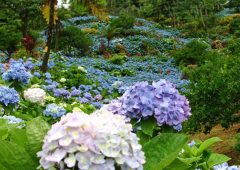 2024.05.25
2024.05.25 2024.04.26
2024.04.26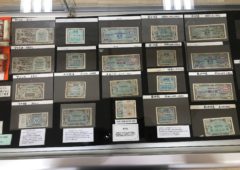 2024.04.22
2024.04.22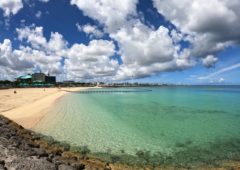 2024.04.10
2024.04.10 2024.01.31
2024.01.31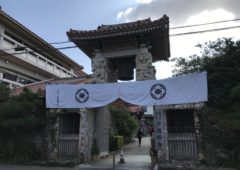 2024.01.02
2024.01.02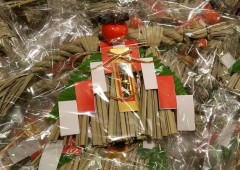 2023.12.27
2023.12.27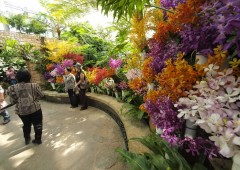 2023.11.16
2023.11.16






